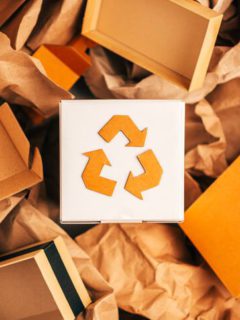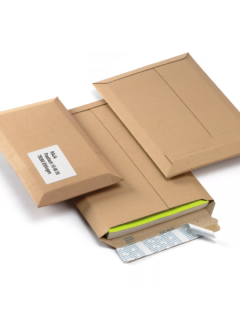Everything you need to know about bubble wrap and its types.
Bubble wrap is indispensable for packaging, but it also has many more uses. What types are there and what is ecological bubble wrap? Welcome to the world of bubble wrap!
Bubble wrap, otherwise known as bubble film. It is difficult to imagine packing fragile items without it. Below we describe its versatility and properties. Bubble wrap is useful not only in every warehouse for packing, but also in every home – if only to protect fragile glass objects.
Types of bubble wrap
Bubble wrap is available in various sizes and colours. The most popular is transparent film. In the RAJA shop we offer the following types of bubble wrap:
-
traditional bubble foil
-
economical bubble foil
-
air-filled cushions,
-
foil with large bubbles,
-
ecological film
-
perforated foil,
-
bubble wrap with perforation,
-
perforated bubble film in a tray.
Ecological bubble wrap
An ecological version of the traditional bubble wrap is also available in the shop. It is made from up to 50% recycled material and is 50 microns thick. It absorbs shocks just as well as regular bubble wrap and is a great alternative to it – especially if you are concerned about the environment and ecology. It can easily be used to wrap a variety of shapes.
History of bubble wrap
Bubble wrap was invented in 1957 by two engineers, A. Fielding and M. Chavannes, who designed a three-dimensional, convex plastic wallpaper. It did not go into production, but thanks to it, bubble wrap was developed. Over the decades, its versatile use has so enthralled people that it was decided to establish Bubble Wrap Appreciation Day, which falls on the last Monday in January.
Here are some ordinary and less ordinary uses of bubble wrap.
Bubble wrap – applications and properties
Thanks to its structure, bubble wrap has properties that give it a wide range of uses. It is made up of regularly spaced small bubbles, or bubbles filled with air. The material from which it is made is flexible, light and soft, so it easily adapts in shape to the objects to be wrapped. It has excellent shock-absorbing properties. It protects objects during falls, vibrations and shocks. The film is impervious to water and protects against dust, dust, moisture and other dirt.
-
Shock and vibration absorption
The foil is primarily used for packaging and protecting shipments during transport. Bubble wrap is excellent at absorbing all vibrations and shocks. It is most often used for the transport of household appliances and consumer electronics, such as computers, monitors, tablets, telephones, drives, etc. In addition, it is used to protect all fragile and delicate items (cosmetics, medicines, glass, porcelain, accessories).
-
Lightweight parcel filler
It is also great as a filler for parcels. It can be used instead of polystyrene chips and other fillers. It perfectly fills the free spaces in the box, protecting the goods from damage and absorbing shocks.
The film is also used as part of popular packaging – bubble envelopes. They are used to send small items that need to be protected. These envelopes are lined with foil on the inside – this also protects the consignment from moisture.
-
Protection of objects during removals
Bubble wrap is also suitable for use during removals. It can be used to wrap various items, not just delicate ones. It is well known that our possessions can be damaged during a move, so it is a good idea to protect valuable items with foil.
-
Thermal insulation
It turns out that bubble wrap also works well as thermal insulation. It is sometimes used for thin wall and roof insulation, as it has a high thermal resistance. It does not absorb energy, but causes it to be reflected.
-
Bubble wrap in gardening
Foil also has less well-known but very useful applications. It is useful in horticulture during the winter. For what? It is an excellent thermal insulator, so it helps protect plants from frost. You need to wrap plant pots with it, so they can survive the worst weather unscathed. The foil should extend several centimetres above the edge of the pot.
-
Bubble wrap for drivers
The bubble wrap will also be appreciated by drivers. In winter, in order to protect the windscreen from freezing and save yourself from tedious scraping, it is sufficient to leave the sheet of foil on overnight, securing it with the windscreen wipers. No scraping will be needed in the morning.
-
Play foil
Last, but perhaps least obvious, but by no means least important, is the use of the film for fun. Everyone knows that snapping bubbles with foil is a great way to de-stress. It’s very addictive and as you know – once you start to snap, you can’t stop. One square metre of film has over 660 bubbles, so there is plenty to do. There is even a Guinness World Record associated with film snapping, i.e. 71 bubbles punctured in 15 seconds.














